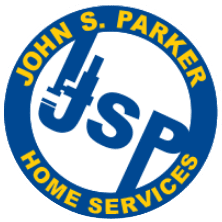Below, our indoor air quality experts explain what causes “spring allergies,” and provide some tips for reducing seasonal allergens in your home so that you can enjoy the warmer weather without a runny nose and itchy eyes.
What causes spring allergies?
Pollen and mold are the main culprits behind spring allergies. Starting as early as February in some years, the weather slowly begins to warm up. This temperature change puts trees into “reproduction mode.” As spring progresses, trees will begin to pollinate heavily, sending clouds of green and yellow pollen that the wind can carry for several miles. Grass pollination takes place during late spring and early summer, adding even more pollen to the air.
Rain can both help and hurt spring allergy sufferers. While “April showers” can wash pollen away and help remove it temporarily from the air, rainfall can spur rapid pollination immediately afterward, and damp conditions combined with warm weather can foster mold growth.
How can I reduce seasonal allergens in my home?
Did you know that millions of people across the U.S. suffer from spring allergies and experience symptoms like sneezing, congestion, and itchy, watery eyes? For many people, the human body sees pollen and mold spores as harmful invaders, so the body sends out histamines to battle whatever is “attacking” you. Those histamines trigger allergic symptoms, like sneezing.
The best way to reduce your symptoms is to take a treatment prescribed by your doctor and to lower the concentration of allergens in your home. Here are just a few ways you can reduce the number of seasonal allergens in your living space:
- Change and launder your clothes after coming indoors from an outdoor activity.
- Never dry your clothes on a clothesline. Dry them indoors, preferably in a dryer.
- Wash and dry your clothes, towels, and linens on the hottest machine settings they can handle.
- Remove your shoes at the door so that you don’t track pollen and germs throughout your home.
- Use an HVAC filter that has a MERV rating of 11 or 13 (or higher, if your system can handle it).
- Develop a weekly dusting schedule.
- Vacuum weekly using a vacuum cleaner with a HEPA filter.
For extra protection against allergens and germs year-round, you may want to consider installing a UV air purifier. These air purification systems work in tandem with your preexisting HVAC system to filter out dust and allergens while also destroying harmful biological contaminants, like germs and mold spores.
At JSP Home Services, our highly qualified Kingston indoor air quality professionals are always available to discuss your needs and help make your home healthier. Please don’t hesitate to contact us online or give us a call at (845) 250-6470.
